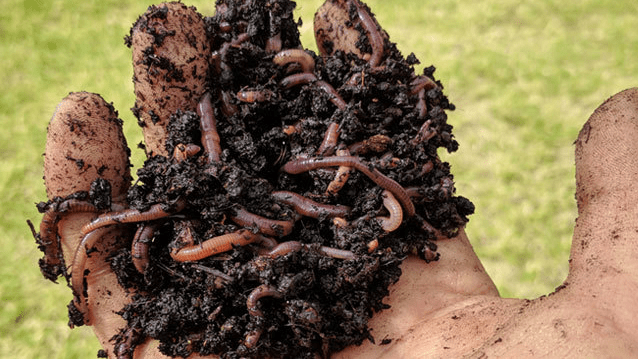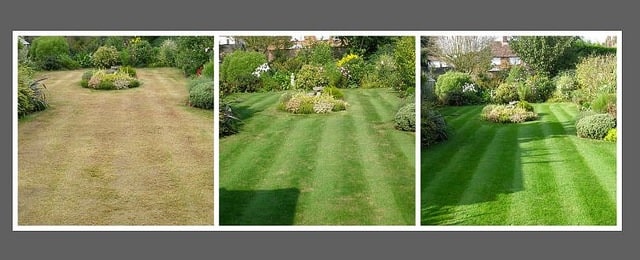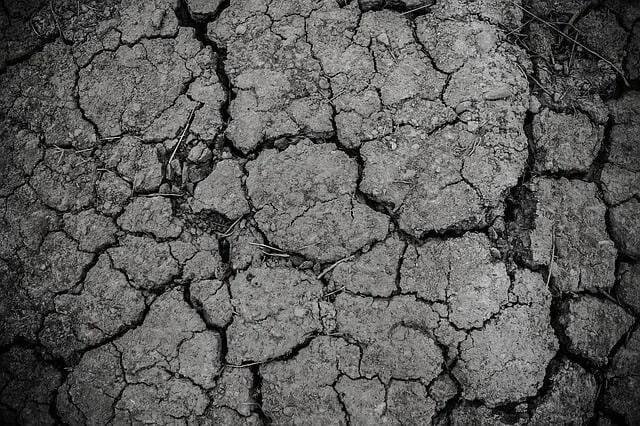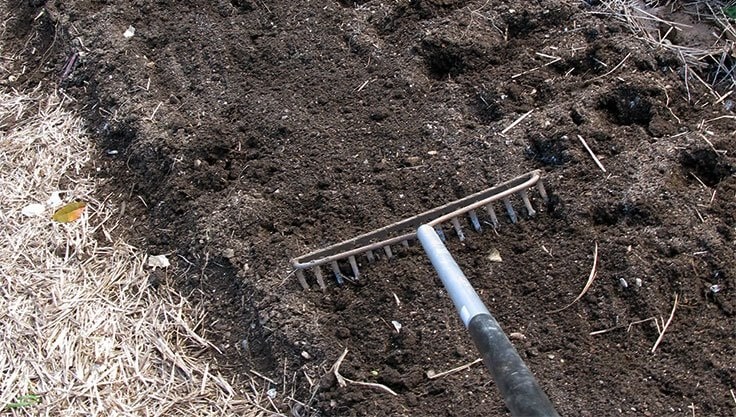Aerating my lawn helps remove moss and thatch, allowing the grass roots to get more oxygen, making my lawn denser and more resilient.
I can easily recognize when it’s time to aerate my lawn. I just drag a small metal rake or cultivator loosely through the grass and check if old mowing residues and moss clumps get stuck on the tines. If I notice a lot of weeds in the lawn, that’s also a clear sign that the grass is inhibited in its growth. This can be due to nutrient deficiency or a thick layer of thatch blocking oxygen from reaching the grass roots. Thatch tends to form in heavy, airless clay soils that retain water, as well as in shady areas. For optimal decomposition of mowing residues, I need well-aerated soil, warmth, and consistent water.
Contents
Key Points for Lawn Aeration:
- I make sure the lawn is completely dry before aerating.
- I set the aerator to the correct height so that the blades don’t penetrate deeper than 3 millimeters.
- I try to work as evenly as possible, starting by aerating in straight lines, then crossing over in a perpendicular direction.
- When turning, I push the handle downward so the blades don’t leave deep tracks.
When Should I Aerate My Lawn?
I can aerate my lawn anytime between April and October, as long as it’s well cared for. However, if I use my lawn a lot in the summer, I’ll aerate in early spring or early autumn. This is because the grass needs a few weeks of rest after aeration to recover. I avoid aerating in autumn unless it’s necessary. I usually start my lawn care season with spring fertilization, which I time with the blooming of daffodils. Once these spring flowers open their buds, my grass starts to grow and can effectively absorb the nutrients. After that, I mow the lawn to normal height (around 4 cm).
When it’s time for the second mowing, which happens about two weeks after fertilizing, it’s the perfect moment to aerate my lawn. By this point, my grass is well-nourished, and any signs of aeration will disappear within a few weeks. From my experience, it’s important not to wait too long to aerate because May can often be hot and dry, so I may need to water the lawn more afterward for it to recover.
How I Aerate My Lawn Correctly
- I Aerate Only Dry Lawns: The grass should be completely dry before I start.
- I Adjust the Aerator Height: I set the blades to only scratch the surface of the grass, no deeper than 2-3 millimeters.
- I Mow the Lawn First: I mow the grass to around 2 cm in height (the lowest setting of my mower).
- I Work Quickly: I move the aerator across the lawn swiftly without lingering in one spot for too long, as this can damage the grass.
- I Aerate in Straight and Perpendicular Lines: I start in one direction and then go across in a perpendicular direction to create a crisscross pattern.
- I Turn Carefully: When I turn, I press the handle downward so the blades don’t dig too deep.
- I Reseed Bare Spots: After aerating, I reseed any bare patches with fresh grass seed.
- I Rake the Thatch: After aeration, I thoroughly rake up the loosened thatch from the lawn.
- I Improve Soil Airflow: For heavy soils, I spread 1-2 kg of builder’s sand per square meter after aerating to improve soil aeration.
Choosing the Right Aerator
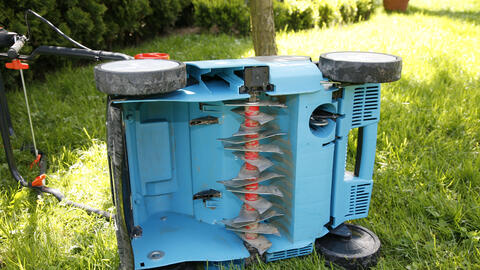
Lawn aerators have a horizontally mounted spindle or axle with rigid or rotatably mounted blades. The motor rotates the axle, and the blades cut into the grass, removing moss and thatch.
- Gas-Powered Aerators: These are perfect for larger lawns. I like them because I don’t need to worry about a power cord, and they’re heavier, which helps the blades cut deeper into the soil, especially on dry, heavy soil.
- Electric Aerators: These are ideal for smaller, easily accessible areas. Since I only use them a couple of times a year, managing the power cord isn’t too much of a hassle. However, lightweight models can struggle on hard soils, so I sometimes weigh the device down with a small sandbag.
- Manual Aerators: These hand-powered tools have rigid or slightly swinging blades. They require a lot of effort and are best for small lawns or for addressing specific problem areas.
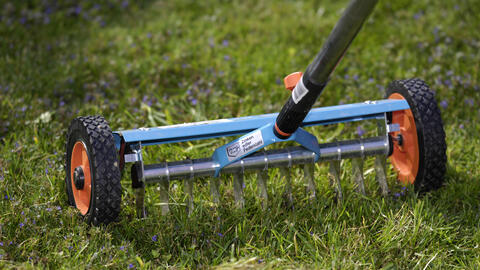
Questions I Often Have About Lawn Aeration
When should I start aerating my lawn?
If I notice an unusual amount of weeds or if I find that mowing residues and moss get stuck on a rake or cultivator when pulled through the grass, it’s time to aerate.
When is the best time to aerate my lawn?
I can aerate my lawn from spring to autumn, typically between April and October. If I use my lawn heavily, early spring or early autumn is best. Ideal temperatures are between 10 and 20 degrees Celsius—avoid aerating during hot weather.
How should I aerate my lawn properly?
I make sure the lawn is dry. I set the aerator blades to a maximum of 2-3 millimeters deep. I move the aerator quickly and evenly across the lawn, first in one direction and then in the opposite direction to create a crisscross pattern.
Costs of Lawn Aeration
The costs depend on whether I choose to aerate the lawn myself or hire a landscaper. Renting an aerator can cost between 15 and 30 dollars per day. Additional costs may include grass seed for reseeding (around 30–40 cents per square meter) and lawn soil for covering the reseed (70 liters for around 15 dollars, covering about 14 square meters). If I hire a landscaper, the cost for aerating 100 square meters can range from 250 to 300 dollars.
What to Do After Aerating
After aerating, I reseed any bare patches and lightly cover them with around 0.5 cm of lawn soil. If I aerate in autumn, I use a special autumn fertilizer. For heavy soils, I apply builder’s sand after aerating to improve the soil’s air balance. I make sure to water the lawn well afterward to help the seed germinate and fill in the gaps quickly.





